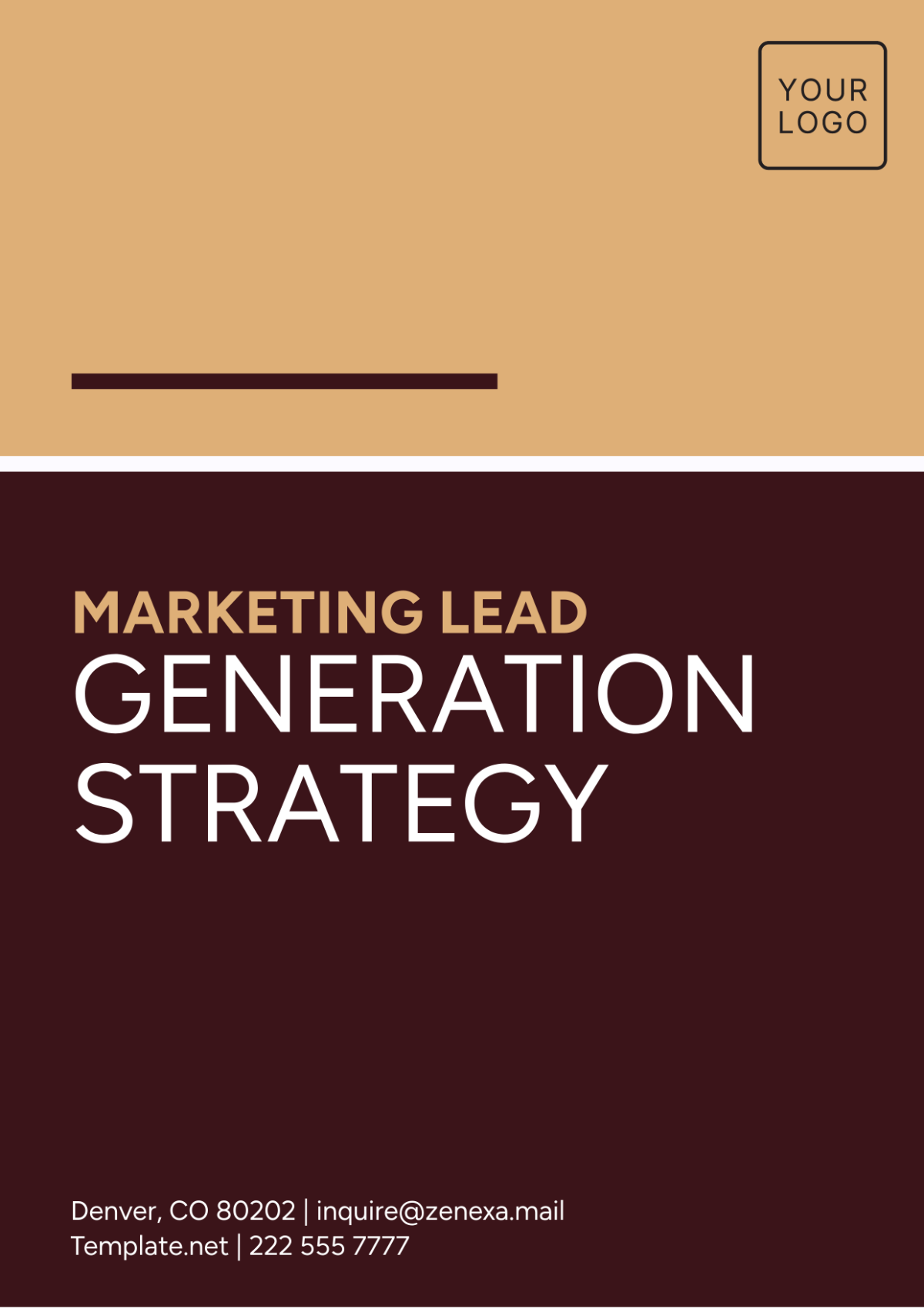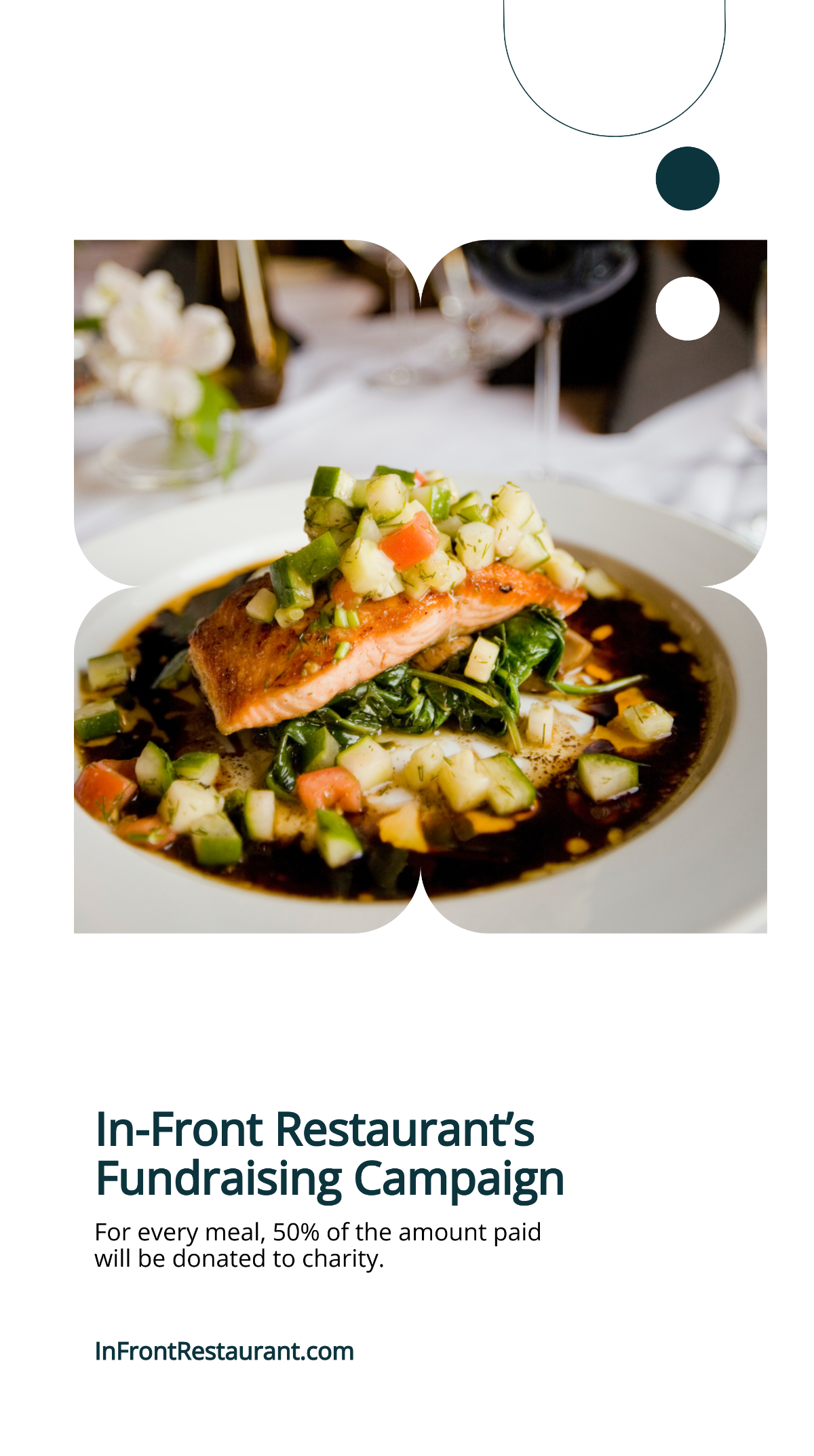Advertising End-to-End Campaign Playbook
I. Introduction
The foundation of this Advertising End-to-End Campaign Playbook is its precise alignment with our organization's strategic vision. This offers a comprehensive overview, explaining the campaign's role in enhancing brand presence in the digital environment.
During the process of developing the campaign, it becomes critically important to identify goals that are not only well-defined and clear but also measurable and attainable. Such goals form an integral part of our marketing strategy, influencing the approach we take and directing our efforts towards considerably increasing the chance of achieving, what we as an organization aspire to, the desired success associated with our brand.
Key Performance Indicators (KPIs)
The Key Performance Indicators, also known as KPIs, are absolutely crucial in order to evaluate and gauge just how successful our campaign has been. These important markers help to measure specific areas such as conversion rates, which highlight the number of potential customers that have been turned into actual customers, and click-through rates, which demonstrates how many users have been engaged enough to click through and actively interact with our content. Amidst these factors, there are also a number of other crucial measures that further contribute to effectively evaluating and determining the success and impact of our campaign.
II. Target Audience Profiling
Demographics
Conduct an analysis of demographic factors to construct a clear overview of the primary audience. This includes but is not limited to age, gender, income levels, geographic location, and educational background. Through meticulous demographic profiling, we aim to precisely tailor our advertising efforts to resonate with the specific characteristics of our target demographic.
Psychographics
Take the time to truly immerse yourself and dive deeply into the complexities and subtle complexities of psychographic elements. Endeavour to explore the various elements such as values, interests, lifestyles, and attitudes that profoundly shape and influence the ways our audience perceives the world. Moreover, understand how these aspects subtly but decisively impact the decisions our audience makes. This thorough understanding will undeniably enhance our ability to effectively resonate with them on a deeper, more meaningful level.
Behavioral Attributes
Unearth behavioral patterns and preferences that define the interactions our audience has with digital platforms. Analyze online behaviors, such as search patterns, content consumption habits, and social media engagement. By comprehensively mapping behavioral attributes, we position ourselves to tailor messaging and content delivery methods to align seamlessly with audience expectations and preferences.
Through a holistic approach to target audience profiling, this playbook ensures that our advertising efforts are not only precise but also deeply resonant, fostering a connection that transcends demographic data and engages the audience on a profound level.
III. Channel Selection And Strategy
Channel Analysis
Conduct an analysis of potential advertising channels, considering the unique attributes and audience demographics associated with each platform. This section delves into a comprehensive examination of digital avenues, including but not limited to social media platforms, search engines, display networks, and emerging channels, to ascertain their relevance and effectiveness in reaching the target audience.
Strategic Approach For Each Channel
Outline a nuanced and tailored strategy for engagement on each selected channel. This involves delineating the tone, content style, and ad format that best resonate with the platform's user base. Emphasize the intricacies of channel-specific optimization, leveraging insights garnered from past campaigns and industry best practices to craft a dynamic and adaptive approach.
Integration Strategy
Detail an integration plan that combines the efforts across chosen channels, fostering a seamless and unified brand presence. Address synergies between channels to amplify the overall impact of the campaign. This involves orchestrating cross-channel promotions, consistent messaging, and synchronized timing for maximum audience reach and engagement.
IV. Budget Allocation And Resource Planning
Budget Overview
Provide a meticulous breakdown of the overall budget for the Advertising End-To-End Campaign, emphasizing the financial framework that will fuel the initiative.
Expense Category | Allocation | Monetary Allocation |
|---|---|---|
Digital Advertising | 40% | $400,000 |
Monetary Allocation
Detail the monetary distribution across specific expense categories, ensuring that each allocation aligns with the strategic priorities of the campaign. Provide clarity on the financial commitment to digital advertising, creative development, analytics tools, contingency reserves, and other miscellaneous expenses.
Human Resources Allocation
Outline the human resource allocation plan, delineating the roles and responsibilities essential for campaign execution. Ensure that each team member's contributions align with their expertise, maximizing efficiency and ensuring a seamless workflow throughout the campaign lifecycle.
Team Member | Role | Responsibility |
|---|---|---|
Marketing Manager | Campaign Oversight | Strategic planning, goal alignment, and overall supervision |
Creative Team | Content and Design Creation | Development of compelling ad creatives and multimedia assets |
Data Analyst | Analytics and Reporting | Real-time monitoring, data analysis, and KPI assessment |
Project Coordinator | Timeline Management | Coordination of tasks, deadlines, and communication channels |
V. Creative Development Guidelines
Copywriting Standards
Craft compelling and concise copy that resonates with the target audience while adhering to brand voice guidelines. Emphasize clarity and relevance, ensuring that the messaging effectively communicates the unique value propositions of the advertised products or services. Include a hierarchy of messaging priorities to guide the development of impactful headlines, taglines, and body copy.
Visual Elements Requirements
Define the visual identity for the campaign by specifying guidelines for imagery, graphics, and overall aesthetics. Ensure consistency with brand guidelines while allowing for creative flexibility. Provide detailed specifications for image resolutions, color schemes, and any branding elements to maintain a cohesive and visually appealing campaign across diverse platforms.
Multimedia Content Guidelines
Delineate the parameters for multimedia content, including video and audio components. Outline the desired tone, style, and duration for videos, ensuring alignment with the overall campaign theme. Specify technical requirements for multimedia assets, such as resolution, format, and file size, to optimize compatibility and performance across various digital channels.
Accessibility Considerations
Integrate accessibility principles into the creative development process. Provide guidelines for creating content that is inclusive and accessible to individuals with diverse abilities. Address considerations such as alt text for images, closed captions for videos, and legible font sizes to enhance the overall user experience and ensure compliance with accessibility standards.
A/B Testing Protocol
Implement a structured A/B testing framework to refine creative elements based on performance data. Define the variables to be tested, such as headlines, visuals, or calls-to-action, and establish a systematic approach for analyzing results. This iterative process ensures continuous optimization of creative assets for maximum effectiveness throughout the campaign.
Collaboration And Approval Workflow
Facilitate a seamless collaboration process among creative teams, marketing stakeholders, and any external agencies involved. Define a clear workflow for creative development, review, and approval, including designated roles and responsibilities. This ensures efficient progress while maintaining quality and consistency in the creative output.
VII. Campaign Execution Timeline
Planning Phase
Commence the campaign with a meticulous planning phase, emphasizing collaboration among cross-functional teams. Clearly outline the tasks and responsibilities of each team member, ensuring a synchronized effort.
Creative Development
Embark on the creative development phase with a focus on adherence to brand guidelines and the campaign's overarching theme. Facilitate iterative feedback loops to refine ad creatives and copy. Strive for a harmonious blend of compelling visuals and persuasive messaging to resonate with the target audience.
Approval Processes
Institute a robust approval workflow to guarantee the quality and consistency of all campaign elements. Involve key stakeholders in the review process, ensuring alignment with brand messaging and legal considerations. Incorporate feedback promptly to avoid delays and streamline the approval chain.
Deployment Schedule
Craft a schedule, considering optimal timing and frequency for each selected channel. Implement a phased approach, coordinating launches across different platforms to maximize reach and impact. Leverage scheduling tools and automation to facilitate a seamless and synchronized deployment process.
VII. Monitoring And Analytics Framework
Key Metrics And KPIs
Delineate a comprehensive set of key performance indicators (KPIs) and metrics to gauge the effectiveness of the advertising campaign. This section serves as a compass for evaluating performance against predetermined objectives. Consider incorporating the following for clarity:
Metric | Definition | Measurement Method |
|---|---|---|
Impressions | Total views of the ad across all platforms | Platform-specific analytics tools |
Click-Through Rate (CTR) | Percentage of users who click on the ad | Ad platform analytics |
Conversion Rate | Percentage of users who take the desired action | Website analytics |
Cost Per Click (CPC) | Cost incurred for each click on the ad | Ad platform analytics |
Return on Ad Spend (ROAS) | Revenue generated for each dollar spent | E-commerce platform analytics |
Monitoring Tools
Specify the tools and technologies employed for real-time monitoring of campaign performance. Integration with state-of-the-art analytics platforms ensures timely access to valuable insights. The following tools are recommended:
Google Analytics: For comprehensive website traffic and user behavior analysis.
Ad Platform Analytics: Leverage the native analytics tools of advertising platforms for ad-specific performance metrics.
Social Media Insights: Utilize insights provided by social media platforms for audience engagement and sentiment analysis.
Data Analysis Methodologies
Outline the methodologies for interpreting and analyzing the gathered data. This includes regular reporting intervals, data visualization techniques, and mechanisms for deriving actionable insights. Employ a combination of automated reporting tools and manual analysis for a nuanced understanding of campaign dynamics.
VIII. Contingency Plans And Risk Mitigation
Risk Assessment
Thoroughly analyze potential risks that may impede the seamless execution of the advertising campaign. Categorize risks into strategic, operational, and external factors to ensure a comprehensive understanding of potential challenges.
Strategic Risks: Evaluate risks related to the overall campaign strategy, such as shifts in market dynamics, competitive actions, or changes in consumer behavior. Develop proactive measures to adapt the strategy dynamically in response to these strategic shifts.
Operational Risks: Identify risks associated with the day-to-day execution of the campaign, encompassing creative development bottlenecks, technical glitches, or resource constraints. Implement contingency plans to address these operational challenges swiftly and maintain campaign momentum.
External Risks: Assess external factors beyond direct control, such as regulatory changes, economic fluctuations, or unforeseen market events. Devise strategies to mitigate the impact of these external risks, ensuring resilience in the face of unpredictable variables.
Contingency Plans
Develop robust contingency plans that act as proactive responses to identified risks, minimizing potential disruptions to the campaign's trajectory. Each contingency plan should be tailored to specific risk scenarios and include clear directives for implementation.
Strategic Contingency Plans: Outline alternative strategic approaches that can be swiftly activated in response to unexpected market shifts or competitive challenges. Establish decision-making protocols to facilitate a seamless transition to these alternative strategies.
Operational Contingency Plans: Detail operational fallback procedures to address unforeseen issues in creative development, technical infrastructure, or resource availability. Define escalation pathways and responsibilities to ensure a coordinated and efficient response to operational challenges.
External Contingency Plans: Formulate adaptive strategies to navigate external challenges, such as regulatory changes or economic uncertainties. Establish communication protocols to keep stakeholders informed and aligned with the evolving external landscape.
Communication Protocols: Define clear communication channels and protocols to facilitate transparent and timely information dissemination in the event of risk activation. Establish a designated communication team responsible for conveying updates, resolutions, and revised expectations to internal and external stakeholders
IX. Post-Campaign Analysis And Conclusion
Performance Evaluation
Conduct a meticulous assessment of the campaign's performance against predetermined KPIs and objectives. Utilize data analytics to measure key metrics, including conversion rates, click-through rates, and engagement levels. Provide a comprehensive analysis of the quantitative and qualitative aspects of the campaign's impact.
Insights And Learnings
Delve into the insights gained during the campaign, identifying trends, patterns, and consumer behaviors. Extract actionable learnings that can inform future strategies and refine targeting approaches. This section serves as a knowledge repository for continuous improvement and optimization.
Recommendations For Future Campaigns
Based on the post-campaign analysis, formulate strategic recommendations for enhancing future advertising endeavors. Propose adjustments to targeting parameters, creative elements, or channel allocation to capitalize on successes and address any identified challenges. Integrate these recommendations into the broader marketing strategy for sustained effectiveness.
The Advertising End-To-End Campaign Playbook serves as a guide for creating successful advertising campaigns. By methodically covering each critical phase, it ensures a strategic and data-driven approach. This playbook not only aligns advertising efforts with organizational goals but also fosters continual improvement through rigorous analysis and feedback integration, thereby driving effective brand communication and achieving measurable business outcomes.

















































